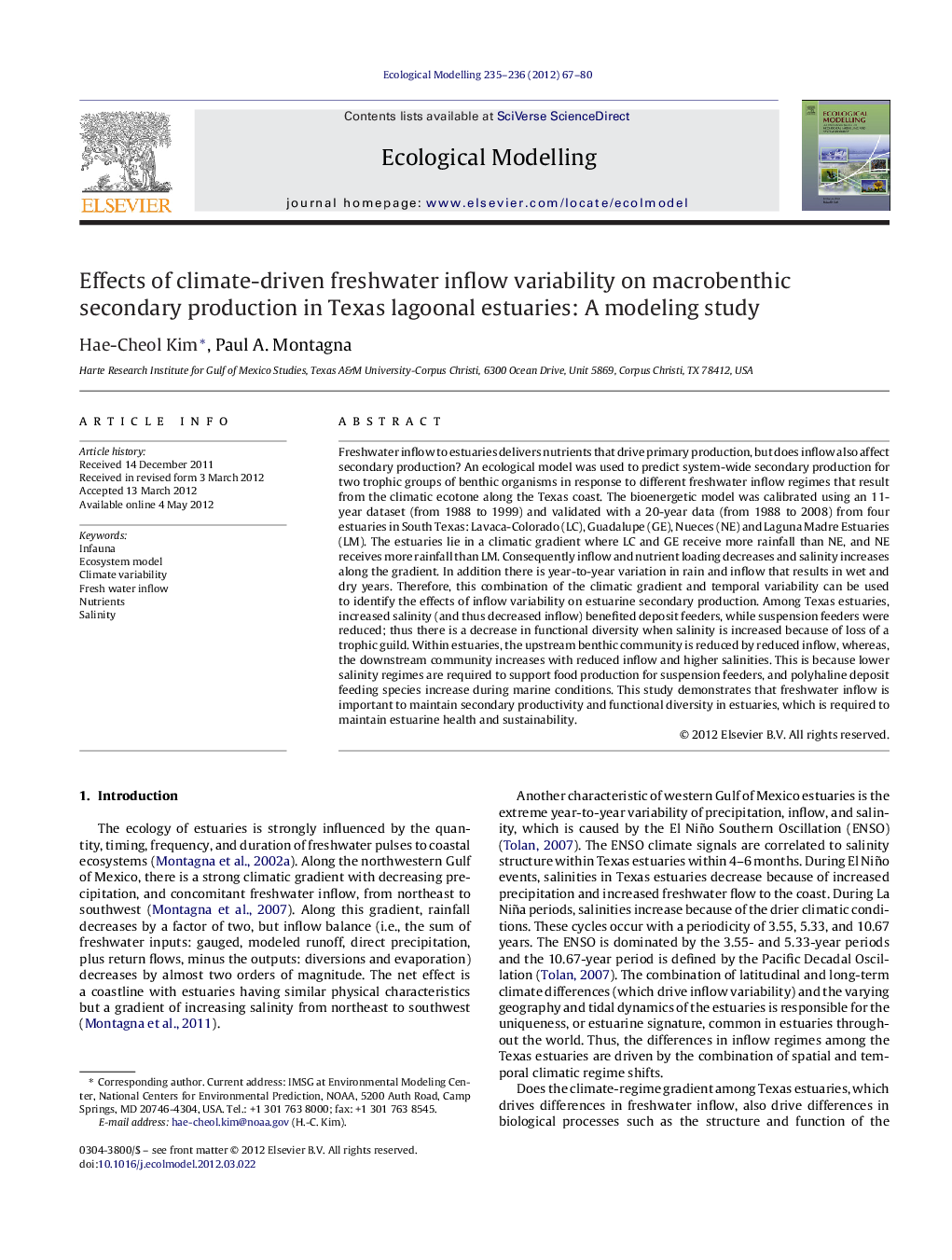| Article ID | Journal | Published Year | Pages | File Type |
|---|---|---|---|---|
| 4376450 | Ecological Modelling | 2012 | 14 Pages |
Freshwater inflow to estuaries delivers nutrients that drive primary production, but does inflow also affect secondary production? An ecological model was used to predict system-wide secondary production for two trophic groups of benthic organisms in response to different freshwater inflow regimes that result from the climatic ecotone along the Texas coast. The bioenergetic model was calibrated using an 11-year dataset (from 1988 to 1999) and validated with a 20-year data (from 1988 to 2008) from four estuaries in South Texas: Lavaca-Colorado (LC), Guadalupe (GE), Nueces (NE) and Laguna Madre Estuaries (LM). The estuaries lie in a climatic gradient where LC and GE receive more rainfall than NE, and NE receives more rainfall than LM. Consequently inflow and nutrient loading decreases and salinity increases along the gradient. In addition there is year-to-year variation in rain and inflow that results in wet and dry years. Therefore, this combination of the climatic gradient and temporal variability can be used to identify the effects of inflow variability on estuarine secondary production. Among Texas estuaries, increased salinity (and thus decreased inflow) benefited deposit feeders, while suspension feeders were reduced; thus there is a decrease in functional diversity when salinity is increased because of loss of a trophic guild. Within estuaries, the upstream benthic community is reduced by reduced inflow, whereas, the downstream community increases with reduced inflow and higher salinities. This is because lower salinity regimes are required to support food production for suspension feeders, and polyhaline deposit feeding species increase during marine conditions. This study demonstrates that freshwater inflow is important to maintain secondary productivity and functional diversity in estuaries, which is required to maintain estuarine health and sustainability.
► The manuscript uses a heuristic model to forecast ecosystem responses. ► The modeling approach takes an inverse method useful for comparison studies. ► Reducing freshwater inflow causes different responses of benthic community. ► Freshwater inflow plays a critical role in maintaining benthic productivity. ► Benthic ecosystem responses to future global water cycle can be forecasted.
